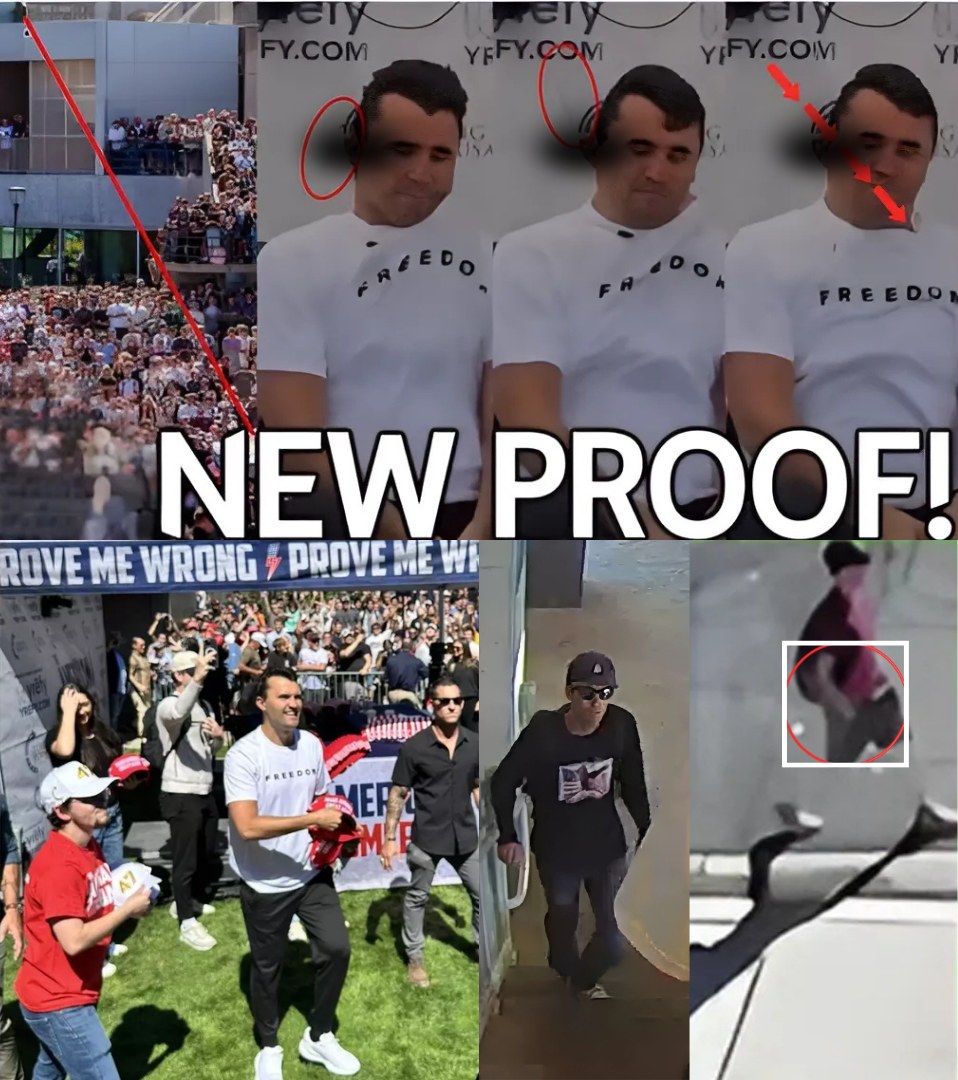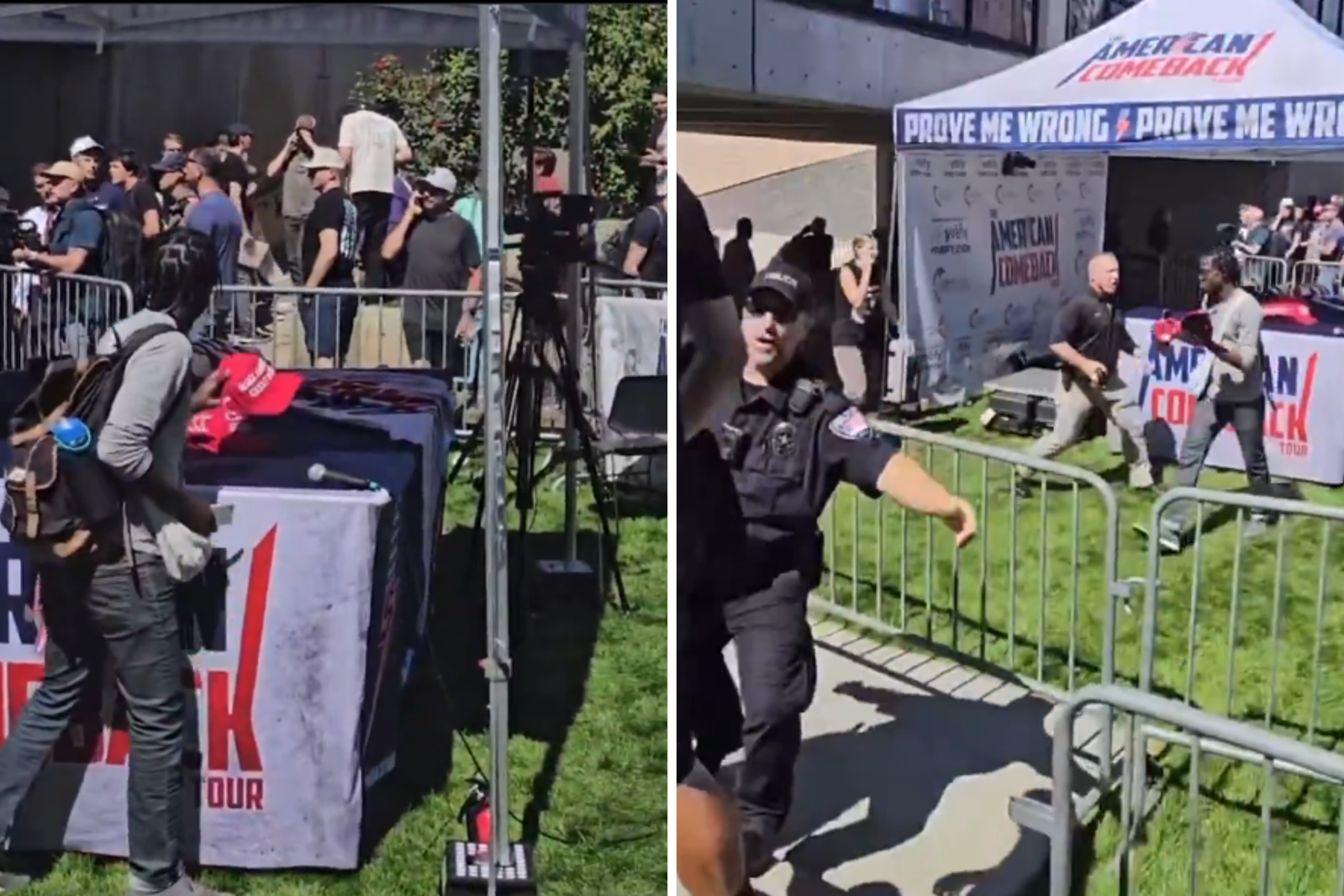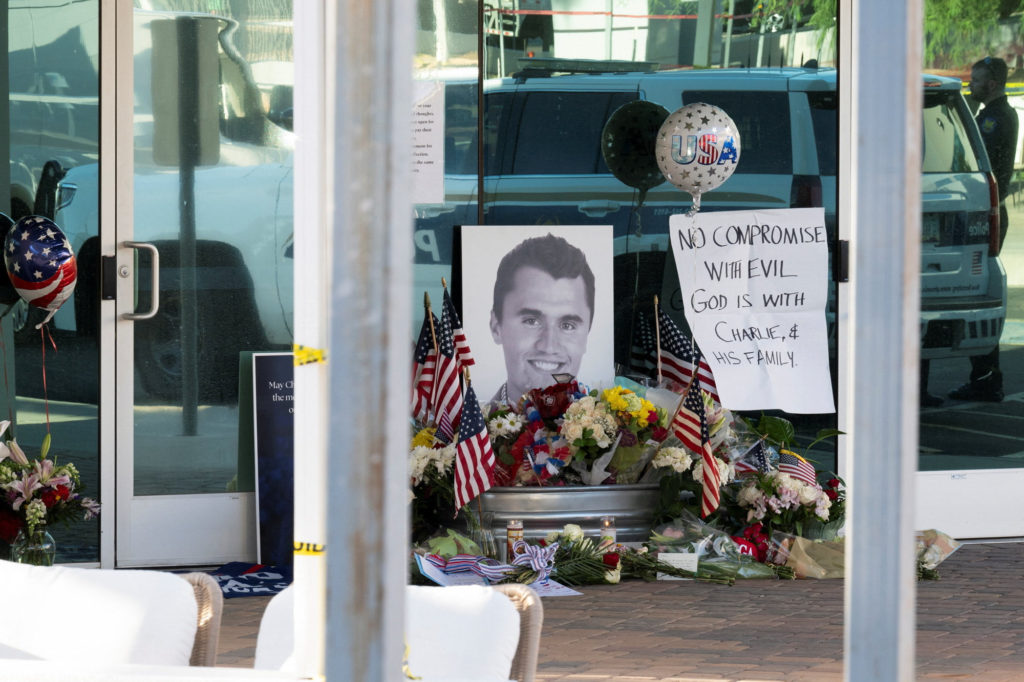
When the news of Charlie Kirk’s tragic shooting broke, the world froze in disbelief. Within hours, the headlines, the hashtags, and the speculation took over.
But one man — a quiet U.S. Navy veteran named Michael “Mick” Delaney — refused to accept what he called
“the sanitized, incomplete version of the story.”
Weeks later, Delaney released a 40-minute frame-by-frame breakdown of the public footage, comparing it against timestamps, crowd positions, and ballistic patterns.
The result: a meticulous, unnerving analysis that may reshape how the public understands what really happened that afternoon.
“I’ve been trained to spot inconsistencies,” Delaney says in the opening minute of his video.
“What I saw in those frames didn’t match the report. Not even close.”

The Moment That Changed Everything
The video begins not with chaos — but silence.
A crowd gathers behind the barricades, a sunny afternoon humming with expectation. Charlie Kirk, the founder of Turning Point USA, had just finished greeting attendees at an outdoor event. Smiles, applause, and casual chatter fill the air.
Then — a sharp sound.
Confusion. Screams. Panic.
But as Delaney rewinds and replays the footage, he points to something subtle, almost invisible in real time: a series of micro-movements before the first sound.
At frame 229 of the clip, one of the security personnel shifts position, partially blocking the camera’s line of sight. In frame 230, a shadow moves just outside the barrier.
And by frame 232 — it happens.
“Everything changes in two frames,” Delaney narrates. “That’s less than one-tenth of a second. But in that moment, you can tell — someone knew what was coming.”
The Veteran’s Method: Military Precision Meets Civilian Curiosity
Delaney is not a YouTuber chasing clicks.
He served twelve years in the U.S. Navy, specializing in logistics and security assessment. He’s spent time analyzing tactical footage, understanding threat patterns, and dissecting the split-second decisions that separate survival from disaster.
So when he began breaking down the Kirk footage, his approach was methodical — almost forensic.
He used military-grade video analysis software, synchronized multiple crowd-sourced angles, and aligned timestamps with digital audio levels.
For each sequence, he documented:
-
Where the guards were standing
-
Which directions they were scanning
-
When communication signals were exchanged
-
How fast the response actually occurred
At first glance, his notes seemed like an exercise in over-detail.
But as the video progresses, Delaney’s findings begin to connect dots no one else had noticed.

The Three-Second Gap No One Can Explain
One of the most chilling moments in Delaney’s breakdown comes at the eight-minute mark.
He freezes the frame exactly 2.7 seconds after the initial sound. The bodyguards appear momentarily still — not ducking, not responding — as if waiting for confirmation before moving.
“This isn’t normal instinct,” Delaney says.
“In any close-protection formation, response begins the second the threat is detected. But here, we see a pause — a freeze. It’s as if they were waiting on something.”
The veteran carefully overlays a tactical clock diagram, showing where each guard was positioned and what their lines of sight covered.
His conclusion? The formation was incomplete — leaving a blind zone precisely in the area where the fatal shot was fired.
Whether this was human error or something more complex, Delaney doesn’t claim to know.
But his calm voice carries the weight of someone who’s seen too much not to ask questions.
Patterns Hidden in Plain Sight
The second half of the analysis dives deeper — into shadows, reflections, and the overlooked corners of the footage.
Delaney zooms in on a window reflection from a nearby building. In slow motion, it shows a quick flash — not bright enough for a muzzle, but distinct enough to draw attention.
He cross-references this flash with a different angle uploaded by a bystander.
Frame by frame, the movements align — suggesting that the light source came from a direction never mentioned in the initial press reports.
“I’m not saying it’s definitive proof,” Delaney clarifies in his narration.
“But if we’re serious about finding the truth, you can’t just ignore this.”
At the 24-minute mark, he presents what he calls “the triangle of silence” — a zone between three security personnel where no one appeared to look during the critical second.
In that triangle, Delaney argues, lies the unanswered question of how such a breach could occur under professional surveillance.

The Missing Frame
One of Delaney’s most unsettling discoveries isn’t about what appears in the footage — but what doesn’t.
According to his timestamps, the clip provided by local authorities skips 0.83 seconds between two frames — a fraction of time too short to notice, but enough to remove several movements.
In a 24-frame-per-second video, that means roughly 20 frames are unaccounted for.
He doesn’t accuse anyone of deliberate editing.
Instead, he poses the question that thousands of viewers have since echoed online:
“Why does the footage jump, right when it matters most?”
To support his claim, Delaney runs the same clip through a timing algorithm used in naval security analysis. The results confirm the discrepancy — a frame drop not consistent with natural compression.
“That doesn’t prove anything criminal,” he concedes.
“But it does prove one thing: what we’ve seen is not the full story.”

Reactions From Experts and Eyewitnesses
Within days of its upload, Delaney’s analysis spread across social media platforms.
Former law enforcement officers, forensic analysts, and independent journalists joined the discussion — each with their own interpretation.
Some praised the veteran’s dedication, calling his work “a rare example of citizen-level precision.”
Others warned that overanalysis could lead to false conclusions.
Still, a striking pattern emerged among experts: they all agreed something about the footage didn’t sit right.
“It’s not about conspiracy,” said retired detective Paula Greer.
“It’s about competence. When a security detail fails this hard, someone needs to answer for it — even if it’s just negligence.”
Eyewitnesses, too, began to revisit their memories.
Several reported that they heard “two different kinds of sound” — one sharp and metallic, another duller and distant.
Delaney included those accounts in a later addendum, noting how the discrepancy could explain the confusion in the crowd reaction.
The Unanswered Questions
Delaney ends his 40-minute breakdown not with accusations, but with a list of questions.
Questions that, to date, remain without clear answers:
-
Why did trained personnel pause for nearly three seconds before moving?
-
Why does one angle of footage show a signal being given — but not acknowledged?
-
Why are 20 frames missing from the most critical moment?
-
And why has no official report addressed these discrepancies?
He insists that his goal isn’t to “expose” anyone — it’s to restore transparency.
“When someone like Charlie Kirk dies in broad daylight,” he says, “you owe the public clarity. Not convenience.”
What the Analysis Reveals About Systemic Failure
Beyond the specifics of the footage, Delaney’s findings touch on a broader theme — how modern security operations can fail even under ideal conditions.
He explains that many private security teams rely on outdated coordination systems and conflicting command hierarchies.
In moments of chaos, that confusion can turn deadly.
“You can have all the funding in the world,” he says.
“But if communication fails — if ego, protocol, or bureaucracy gets in the way — then no amount of equipment can save a life.”
In Delaney’s view, the footage isn’t just about one tragic event; it’s a mirror reflecting deeper flaws within elite protection systems.
Systems where human instincts get suppressed by rigid chains of command, and moments of hesitation can rewrite history.
The Emotional Aftermath: A Nation Divided
As the analysis spread online, reactions were deeply polarized.
Some hailed Delaney as a patriot demanding answers. Others accused him of sensationalizing tragedy.
But for many viewers, his calm, factual tone stood out.
He never raises his voice, never makes wild claims — just slow-motion clips, timestamps, and technical notes.
That quiet restraint made the video even more haunting.
For those who admired Charlie Kirk, it reopened wounds that hadn’t yet healed.
For skeptics of the official narrative, it offered validation.
And for everyone else, it raised a troubling question: how much of what we’re told is filtered, simplified, or lost in translation?
The Power of One Citizen With a Camera
Perhaps the most striking takeaway from Delaney’s analysis is not the footage itself, but what it represents: the democratization of truth.
In an age where institutions control most narratives, one man with a laptop and the will to question has ignited a nationwide debate.
The Navy veteran never expected fame, and he still refuses interviews from major outlets. He posts updates quietly, using his old call sign “MickNav77.”
His most recent message to viewers was short and powerful:
“I don’t claim to have the answers.
I just know we deserve better questions.”
That humility — that insistence on clarity over clout — has made him something rare: a trusted voice in a storm of noise.
Beyond the Footage: What Happens Next?
In the weeks since Delaney’s release, advocacy groups and citizen researchers have petitioned for a public re-examination of the available footage.
Digital forensics teams are volunteering to analyze the raw files independently, hoping to confirm or debunk the missing-frame theory.
Meanwhile, mainstream coverage has largely avoided mentioning the video directly — though smaller outlets have begun referencing “independent analyses circulating online.”
Whether that silence represents caution or avoidance remains unclear.
But one thing is certain: the conversation has shifted.
Once dismissed as “a closed case,” the tragedy surrounding Charlie Kirk now sits at the center of an unresolved national debate — one that challenges trust in both protection systems and public narratives.

